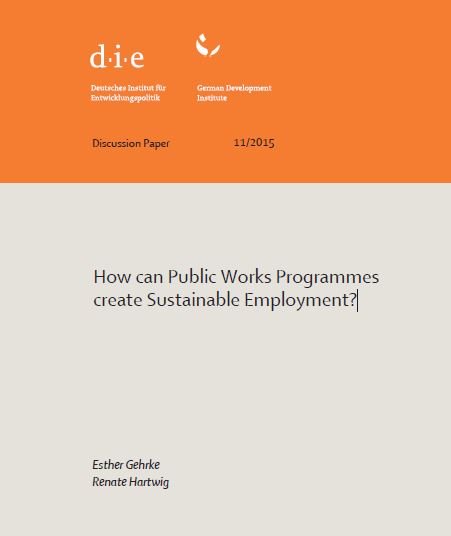How Can Public Works Programmes Create Sustainable Employment?
DIE paper on the long-standing development interventions that have become increasingly popular and more ambitions in recent years
Originally used as tools for ad-hoc poverty relief in response to economic downturns and natural disasters, they are now used more and more as long-term social protection tools. As a prominent example, India now guarantees minimum employment by law. Other programmes are used to provide formal training opportunities, agricultural inputs or credit. The popularity of public works programmes is due to their potential ‘double dividend’: not only do they aim to reduce poverty and foster growth by transferring income directly to the poor, they are also designed to build and improve the infrastructure or deliver other public goods and services at the same time.
However, the higher the level of ambition, the more tradeoffs there are likely to be. Hence, the question this paper seeks to answer is whether public works programmes are fit to serve multiple objectives and how they should be designed in order to do so. We concentrate on the effects of public works programmes on sustainable employment, which should be a good proxy for their effects on poverty reduction and growth. The term ‘sustainable employment’ is used here to refer to jobs beyond those generated directly by the programmes themselves, i.e. to employment which is likely to persist after a public works programme has ended.
Public works programmes could affect sustainable employment through a variety of channels, four of which are put to the test in this study.


